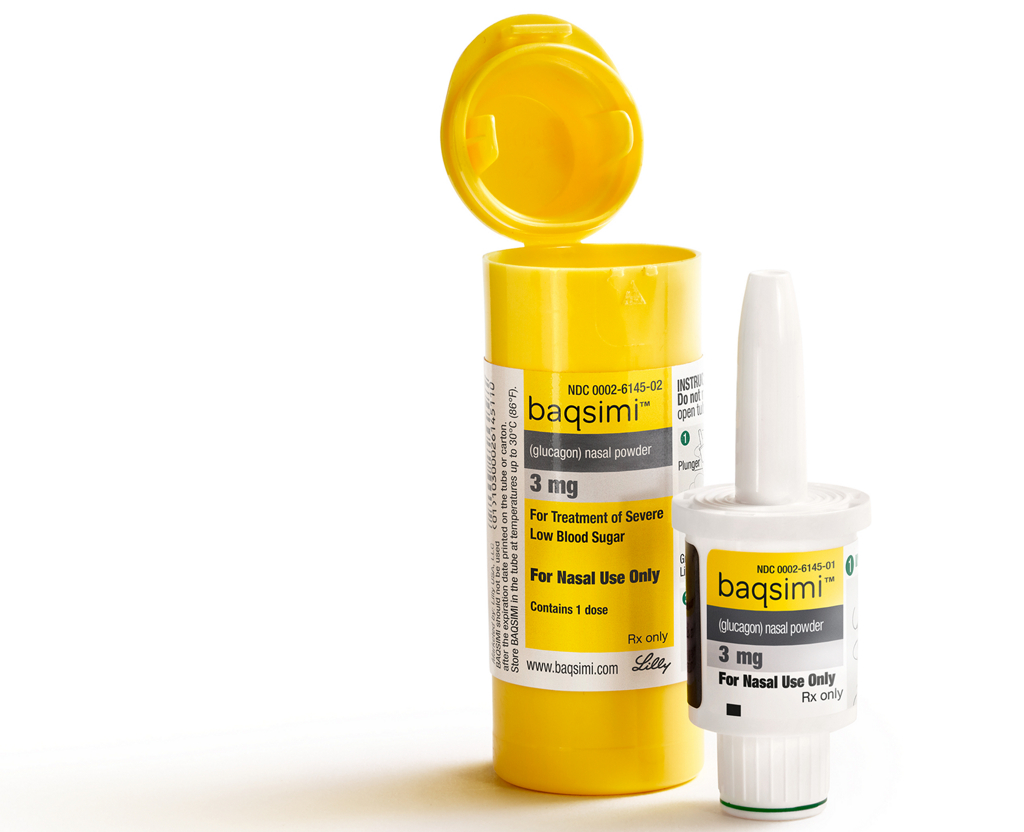FDA approves first nasal glucagon powder for severe hypoglycemia
Click Here to Manage Email Alerts
The FDA on Wednesday approved the first nasal glucagon powder for the emergency treatment of severe hypoglycemia in children and adults with diabetes, according to an agency press release.
Glucagon, one of the first-line treatments for severe hypoglycemia in a real-world setting, is unstable in an aqueous form. Available kits contain powdered glucagon that must be reconstituted in a multistep process before the drug can be administered to a patient, and a caregiver may also be required to decide on the correct dose to administer to a child based on his or her body weight. Nasal glucagon (Baqsimi, Eli Lilly) delivers glucagon as a dry powder spray in a portable, single-use, ready-to-use device.
“People who are living with diabetes are at risk of their blood sugar levels falling below the normal range. There are many products on the market for those who need insulin, but until now, people suffering from a severe hypoglycemic episode had to be treated with a glucagon injection that first had to be mixed in a several-step process,” Janet Woodcock, MD, director of the FDA’s Center for Drug Evaluation and Research, said in the release. “This new way to administer glucagon may simplify the process, which can be critical during an episode, especially since the patient may have lost consciousness or may be having a seizure. In those situations, we want the process to treat the suffering person to be as simple as possible.”
Nasal glucagon increases blood glucose levels in the body by stimulating the liver to release stored glucose into the bloodstream.
The efficacy and safety of nasal powder glucagon was evaluated in two studies of 83 and 70 adults with diabetes, respectively, comparing a single dose of nasal glucagon to a single dose of glucagon injection in causing a blood glucose response to insulin-induced hypoglycemia. In both studies, nasal glucagon adequately increased blood glucose levels. In a pediatric study of 48 patients aged at least 4 years with type 1 diabetes, similar results were observed.

Nasal glucagon is contraindicated in people with pheochromocytoma or insulinoma, a tumor of the pancreas. Baqsimi also carries a warning that it should be used with caution by those who have been fasting for long periods, have adrenal insufficiency or have chronic hypoglycemia because these conditions result in low levels of releasable glucose in the liver. The most common adverse reactions associated with nasal glucagon are nausea, vomiting, headache, upper respiratory tract irritation, watery eyes, redness of eyes and itchiness.
“Severe hypoglycemia is an unpredictable event for people with diabetes that can happen anytime, anywhere,” Sherry Martin, MD, vice president of Lilly Medical Affairs, said in a company press release. “It’s an experience that can be very stressful and difficult for those helping a person in a low blood sugar emergency. The FDA’s approval of Baqsimi may help people prepare for these moments with an innovative product that has the simplicity of nasal administration.”
The U.S. list price for nasal glucagon is $280.80 for one-pack and $561.60 for a two-pack supply. In its press release, Lilly noted it is in discussions with insurance providers to make Baqsimi available to as many people as possible. Eligible, commercially insured people with diabetes can pay as little as $25 for up to two nasal glucagon devices with a Lilly savings card, according to the company.
“Lilly may also be able to help people who don’t have commercial insurance coverage with options found through the Lilly Diabetes Solutions Center when Baqsimi is available in U.S. pharmacies,” the company stated in the release. – by Regina Schaffer
Disclosures: Martin is vice president of Lilly Medical Affairs. Woodcock is director of the FDA’s Center for Drug Evaluation and Research.
